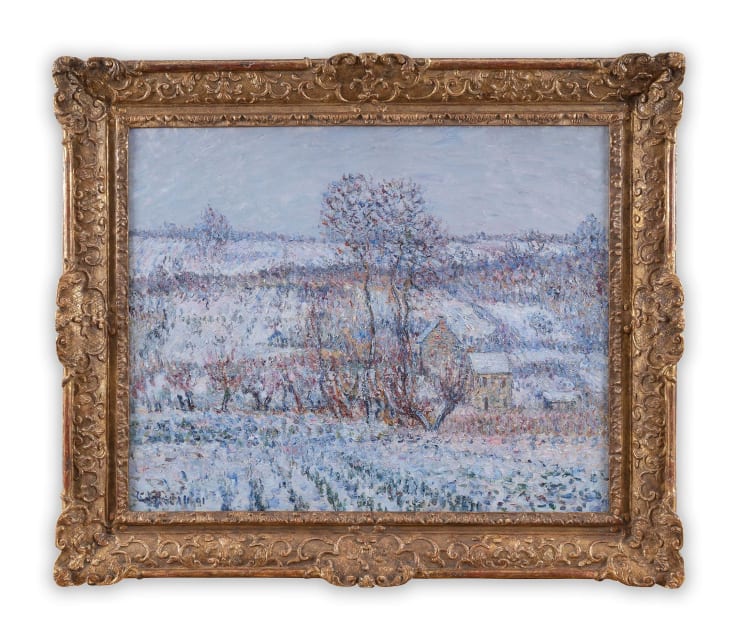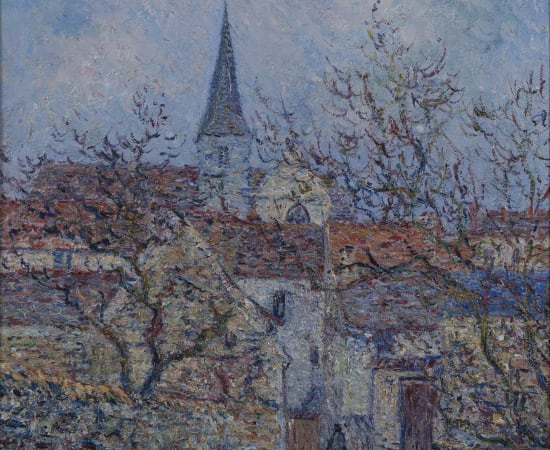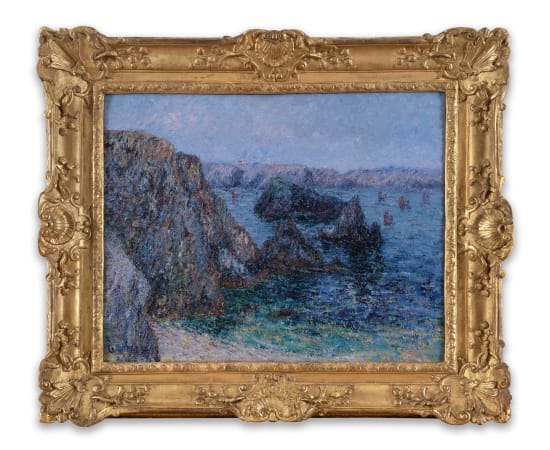Gustave Loiseau (1865-1935) French
Works
Biography
Gustave Loiseau occupies a distinctive place in the lineage of post-Impressionist painters—a quiet yet masterful observer of the French countryside, whose brush captured not just the appearance of nature, but its pulse. Born in Paris and deeply connected to the rural landscapes of Normandy and the Seine Valley, Loiseau dedicated his life to recording the shifting moods of the natural world, returning season after season to familiar sites in a practice both meditative and modern.
Trained briefly under Fernand Quignon and influenced by his contact with the Pont-Aven School, Loiseau quickly forged his own path—eschewing artistic schools in favor of an intuitive language rooted in place and atmosphere. His signature en treillis technique, a crosshatched, rhythmic application of paint, became a hallmark of his mature style and a subtle bridge between Impressionist luminosity and the structural sensitivities of the Post-Impressionists.
Loiseau’s canvases breathe with quiet movement: winding roads veiled in morning mist, village rooftops under fresh snow, and riverbanks that shimmer under spring skies. His preoccupation with time—daily, seasonal, and historical—is evident in his repeated exploration of the same motif under changing conditions, echoing the serial approaches of Monet but with a temperament more introspective and lyrical.
Though often working in solitude, Loiseau was closely connected to the broader artistic milieu of his time. He exhibited regularly at the Salon des Indépendants and the Salon d’Automne, and his works were acquired by major collectors during his lifetime. Today, his paintings are held in the collections of institutions such as the Musée d'Orsay, the Petit Palais, and international museums including the Art Institute of Chicago.
At Bailly Gallery, Loiseau’s presence aligns with a curatorial philosophy that honors both innovation and continuity. His works—timeless, deeply felt, and quietly revolutionary—invite contemplation and reward close looking. In his art, we find a poetic synthesis of vision and memory, of fleeting light captured with enduring grace.
Trained briefly under Fernand Quignon and influenced by his contact with the Pont-Aven School, Loiseau quickly forged his own path—eschewing artistic schools in favor of an intuitive language rooted in place and atmosphere. His signature en treillis technique, a crosshatched, rhythmic application of paint, became a hallmark of his mature style and a subtle bridge between Impressionist luminosity and the structural sensitivities of the Post-Impressionists.
Loiseau’s canvases breathe with quiet movement: winding roads veiled in morning mist, village rooftops under fresh snow, and riverbanks that shimmer under spring skies. His preoccupation with time—daily, seasonal, and historical—is evident in his repeated exploration of the same motif under changing conditions, echoing the serial approaches of Monet but with a temperament more introspective and lyrical.
Though often working in solitude, Loiseau was closely connected to the broader artistic milieu of his time. He exhibited regularly at the Salon des Indépendants and the Salon d’Automne, and his works were acquired by major collectors during his lifetime. Today, his paintings are held in the collections of institutions such as the Musée d'Orsay, the Petit Palais, and international museums including the Art Institute of Chicago.
At Bailly Gallery, Loiseau’s presence aligns with a curatorial philosophy that honors both innovation and continuity. His works—timeless, deeply felt, and quietly revolutionary—invite contemplation and reward close looking. In his art, we find a poetic synthesis of vision and memory, of fleeting light captured with enduring grace.
Enquire





